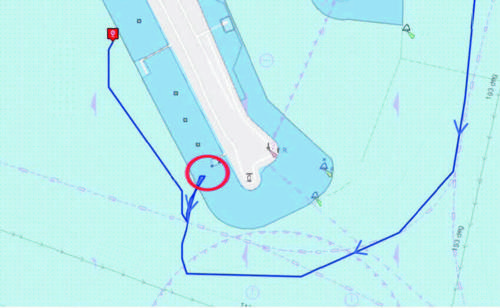The Nautical Institute presents an incident where, in daylight and good weather conditions, a loaded tanker was being conned into port by a pilot. Also on the bridge were the Master, helmsman and OOW.
The berthing plan had been discussed. With the help of two tugs, the vessel was to be swung 180 degrees off the dock and secured port side to.
When the vessel was off the dock and almost stopped, it started pivoting to port with the assistance of two tugs as planned. The forward tug was pushing the bow to port and the aft tug was pulling the stern to starboard. During the manoeuvre, the officer at the aft mooring station reported to the bridge that the distance between the vessel and the dolphin was now about 15 metres and steadily decreasing. The pilot immediately ordered the helm hard to port and gave a number of engine orders in quick succession including dead slow ahead, slow ahead, half ahead and finally full ahead as well as the helm order. About two minutes after the start of the pilot’s ahead orders a muffled noise was heard astern. The vessel was subsequently safely moored.
Later, an underwater inspection revealed no damage to the dolphins but the sand around the base of the dolphins was slightly disturbed.
The vessel’s rudder was found to be about eleven degrees offset to starboard, presumably due to the bottom contact. It was later found that the rudder stock was fractured. Repairs required dry-docking the vessel including installing a new rudder stock. The vessel was off-hire for more than two months.
The incident investigation found that the pilot had misjudged the current. At that time, the pilot reportedly considered that the current was running away from the berth (in a westerly direction), yet the current was actually acting towards it. The investigation also concluded that the pilot was essentially working alone during the docking manoeuvre, thus indicating a Bridge Resource Management (BRM) failure.

Lesson learned
- Even local experts, such as a pilot, can make mistakes. They are human too! Have the bridge team fully engaged with the people doing the manoeuvring and set up agreed distance parameters and speeds when in confined waters.
- Be prepared to challenge the person with the con if the manoeuvre is not going as planned.






























































